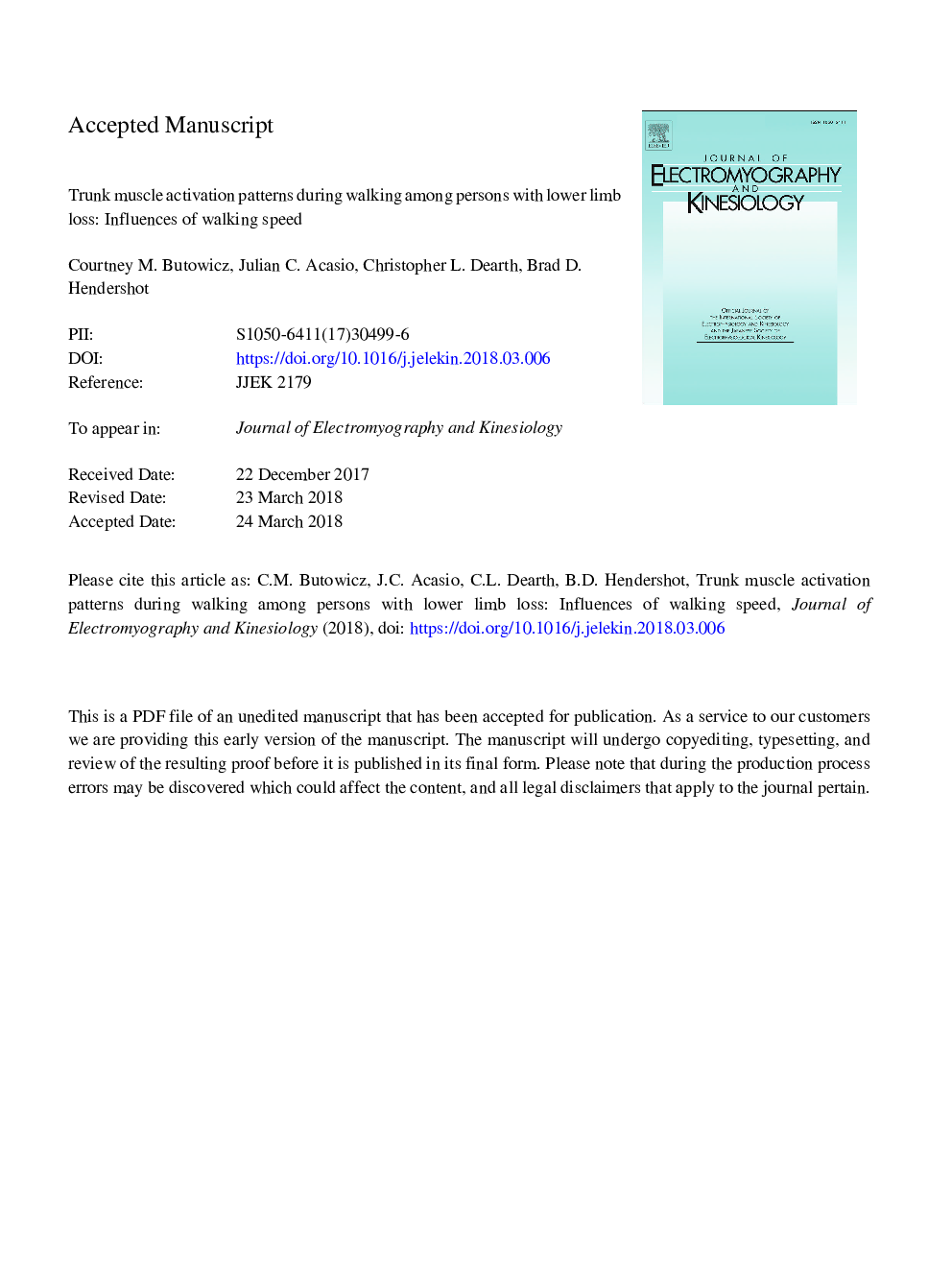| Article ID | Journal | Published Year | Pages | File Type |
|---|---|---|---|---|
| 8799773 | Journal of Electromyography and Kinesiology | 2018 | 30 Pages |
Abstract
Persons with lower limb amputation (LLA) walk with altered trunk-pelvic motions. The underlying trunk muscle activation patterns associated with these motions may provide insight into neuromuscular control strategies post LLA and the increased incidence of low back pain (LBP). Eight males with unilateral LLA and ten able-bodied controls (CTR) walked over ground at 1.0â¯m/s, 1.3â¯m/s, 1.6â¯m/s, and self-selected speeds. Trunk muscle onsets/offsets were determined from electromyographic activity of bilateral thoracic (TES) and lumbar (LES) erector spinae. Trunk-pelvic kinematics were simultaneously recorded. There were no differences in TES onset times between groups; however, LLA demonstrated a second TES onset during mid-to-terminal swing (not seen in CTR), and activation for a larger percentage of the gait cycle. LLA (vs. CTR) demonstrated an earlier onset of LES and activation for a larger percentage of the gait cycle at most speeds. LLA walked with increased frontal plane trunk ROM, and a more in-phase inter-segmental coordination at all speeds. These data collectively suggest that trunk neuromuscular control strategies secondary to LLA are driven by functional needs to generate torque proximally to advance the affected limb during gait, though this strategy may have unintended deleterious consequences such as increasing LBP risk over time.
Related Topics
Health Sciences
Medicine and Dentistry
Orthopedics, Sports Medicine and Rehabilitation
Authors
Courtney M. Butowicz, Julian C. Acasio, Christopher L. Dearth, Brad D. Hendershot,
